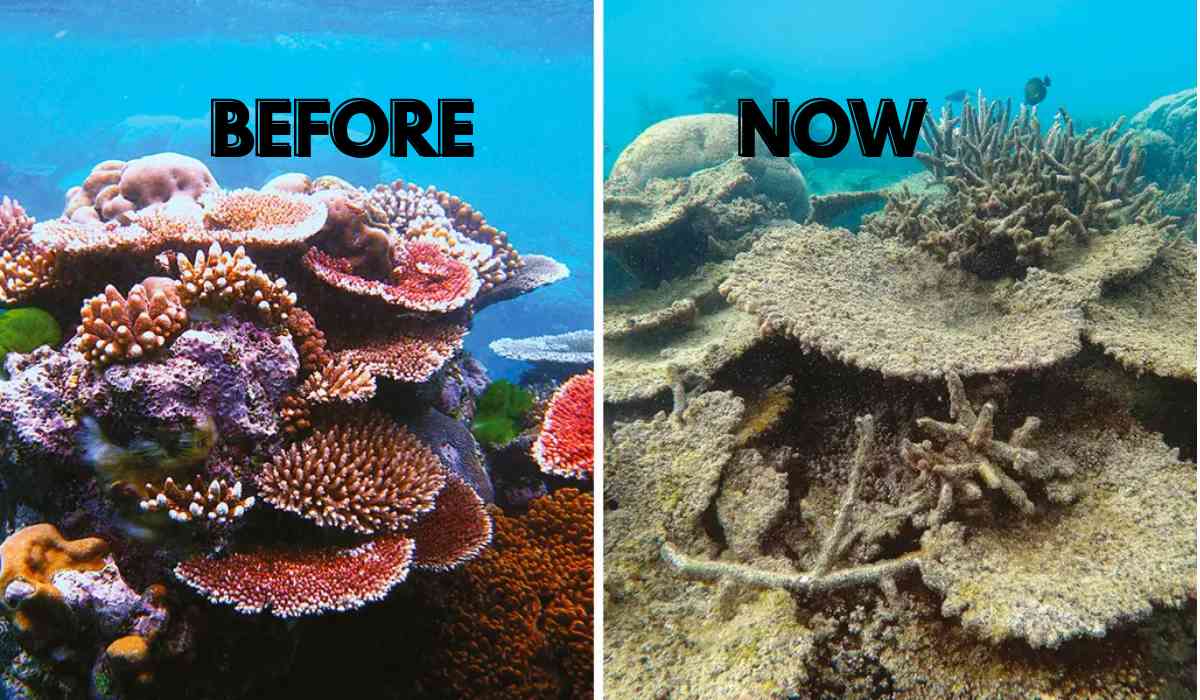Picture this scenario: you've just reached your dream tropical destination, eager to explore the clear waters and vibrant underwater life. As you gear up for snorkeling and plunge into the ocean, you're greeted by a magical world of colors and shapes. The water is warm, the sun is bright, and curious fish surround you. It feels like a dream until you notice something unusual. Approaching a group of corals, you see the once-vibrant hues have faded to a pale, bleached white. As you get closer, the reality sinks in: the coral is bleached.
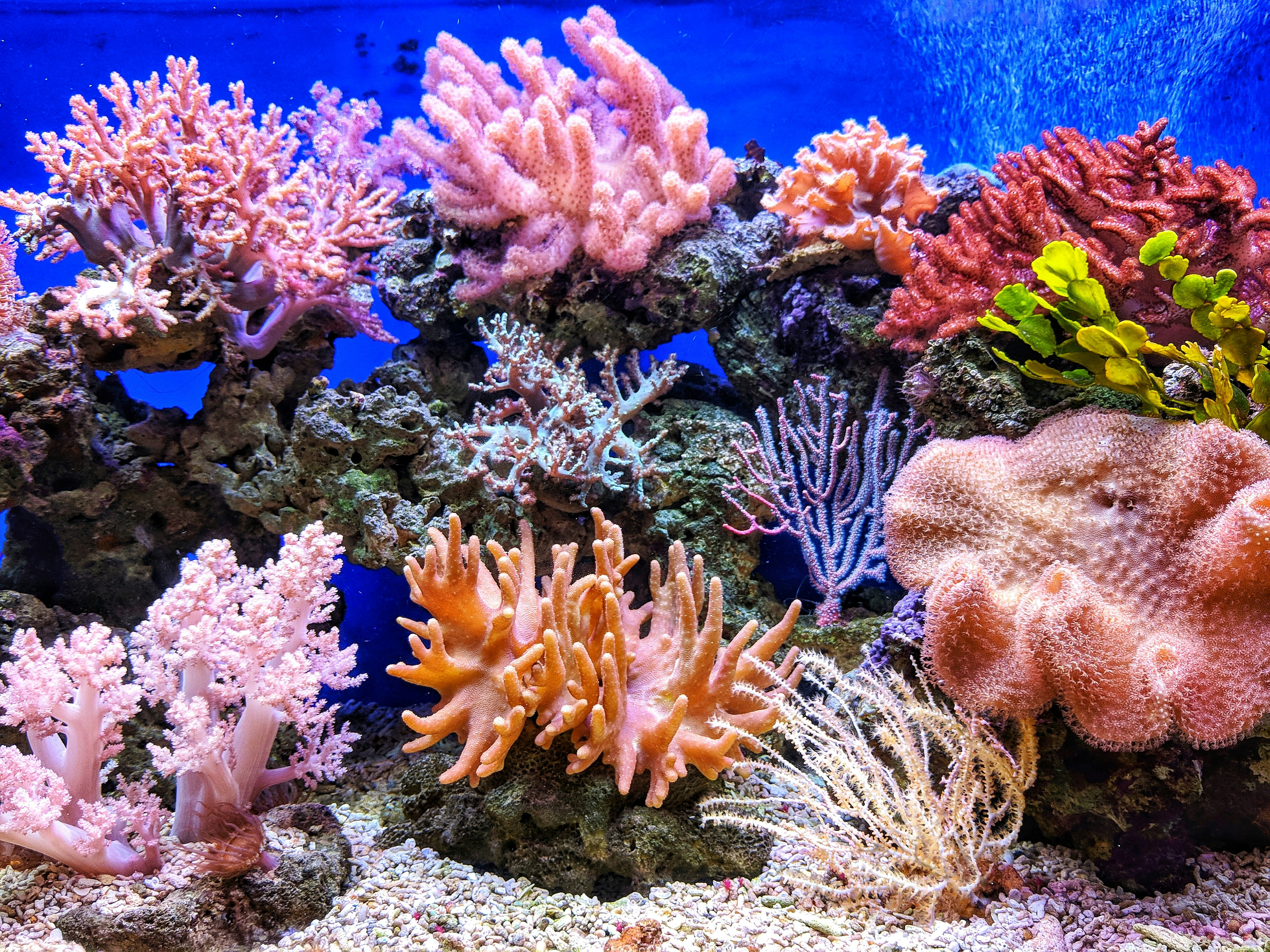
What is Coral Bleaching?
Corals are vibrant and colorful marine animals that engage in a symbiotic relationship with tiny algae known as zooxanthellae.
These zooxanthellae live inside the coral, benefiting each other in a mutually supportive manner. The algae provide the coral with essential nutrients and oxygen, while the coral offers them a secure habitat. This partnership is a win-win situation for both the parties involved!
Coral bleaching occurs when corals lose their vivid colors and become pale or white. However, the process is more complex than just color loss.
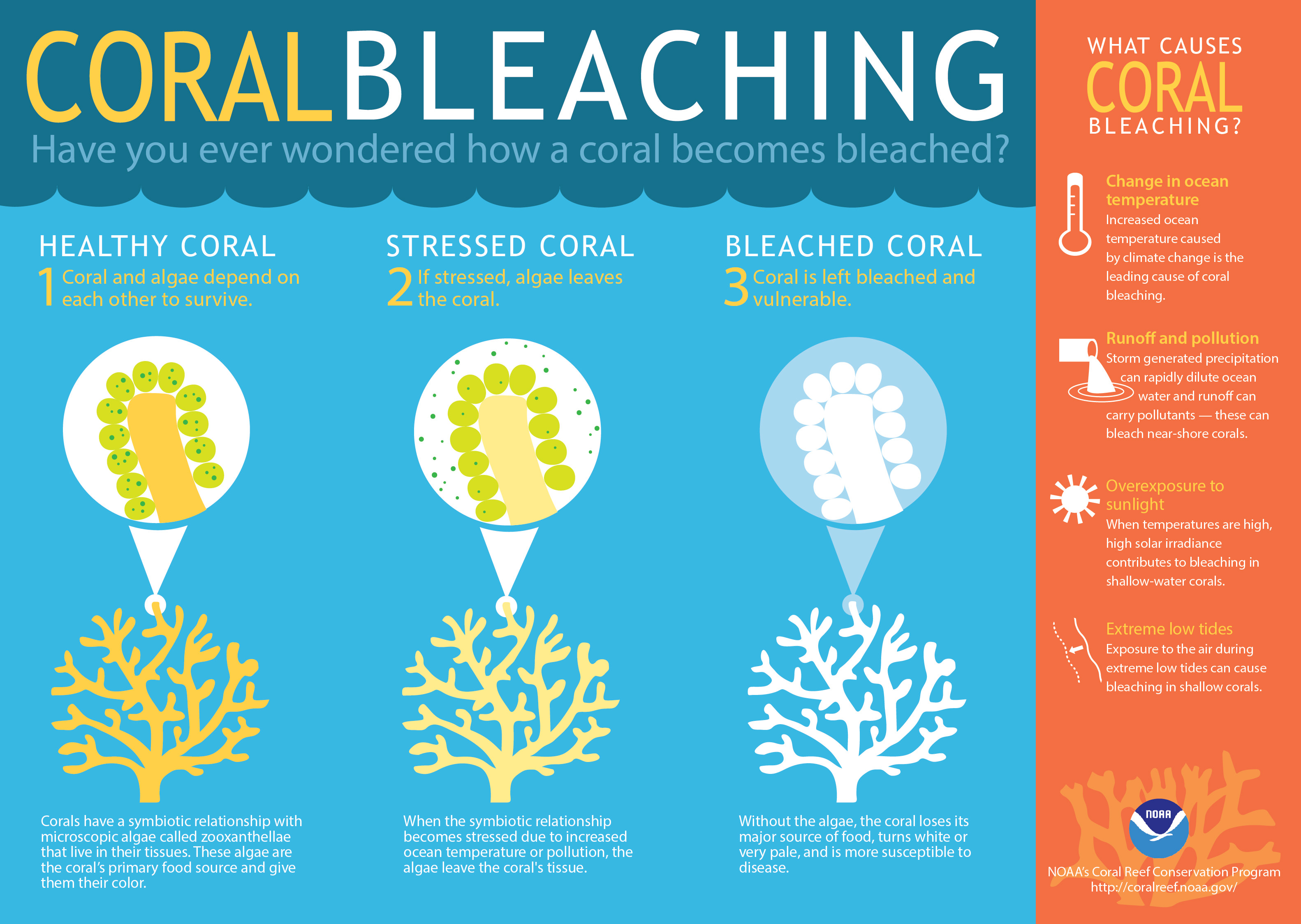
Under stressful circumstances such as elevated temperatures or pollution, or due to changes in the ocean environment (like increased temperatures), corals become stressed and expel the zooxanthellae. Without these algae, the coral loses its color and turns white, leading to what is termed "bleaching."
Corals cannot survive long in this state. If the temperature remains high, the coral will not reabsorb the algae and will eventually die. The primary cause of coral bleaching is climate change. As our planet warms, so do our oceans, and even a slight increase in water temperature—just 2 degrees Fahrenheit—can prompt corals to expel their algae.
However, there is a silver lining, coral bleaching doesn't necessarily signal the demise of the reef. If the stressors are alleviated promptly, the zooxanthellae can return, and the corals can recuperate.
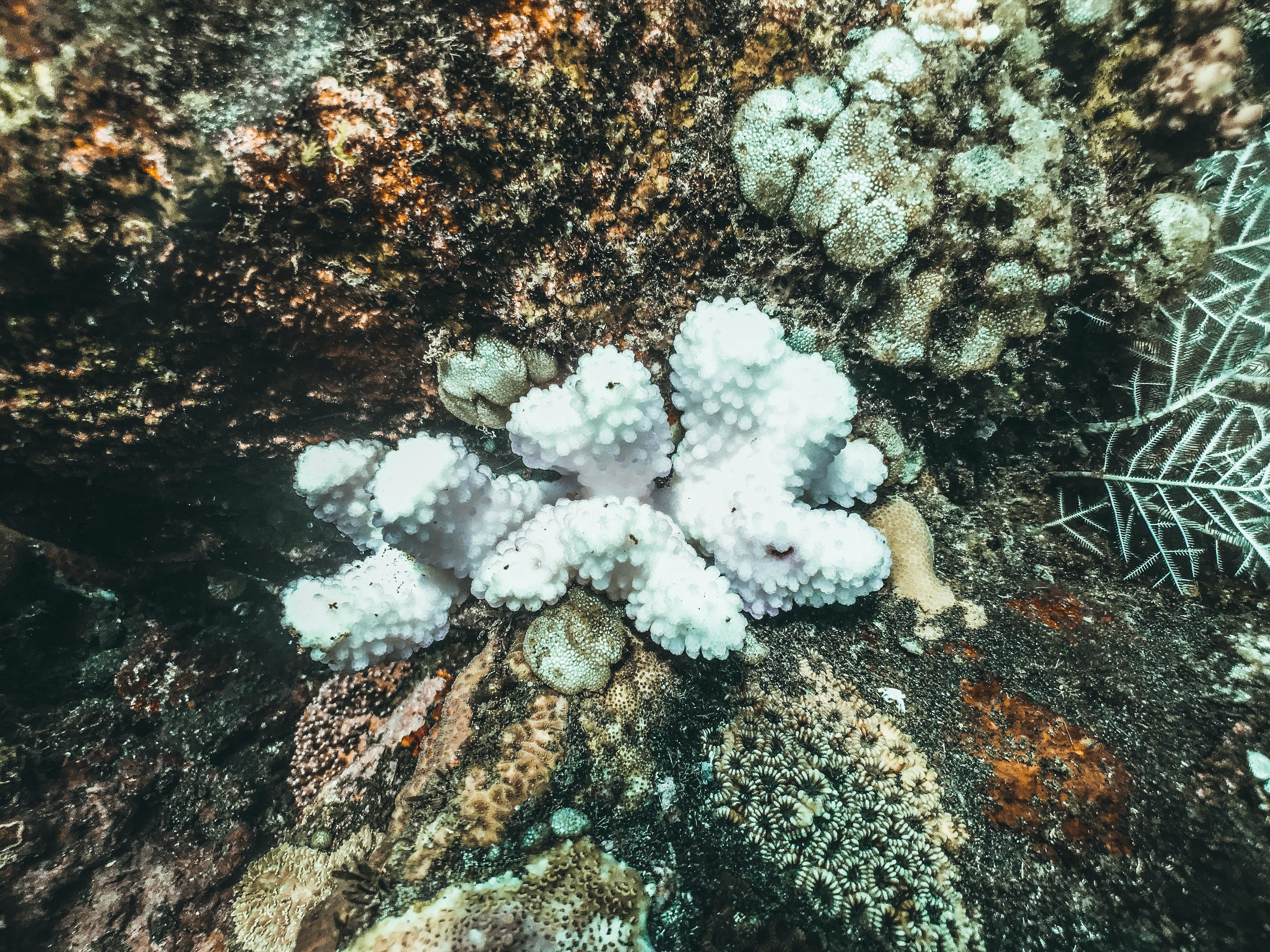
Why Should We Care?
The issue of coral bleaching demands our collective concern due to the critical role coral reefs play in sustaining the health of our oceans and our planet.
Coral reefs serve as crucial habitats and food sources for a vast array of marine life, offering shelter to countless species of fish and other aquatic organisms.
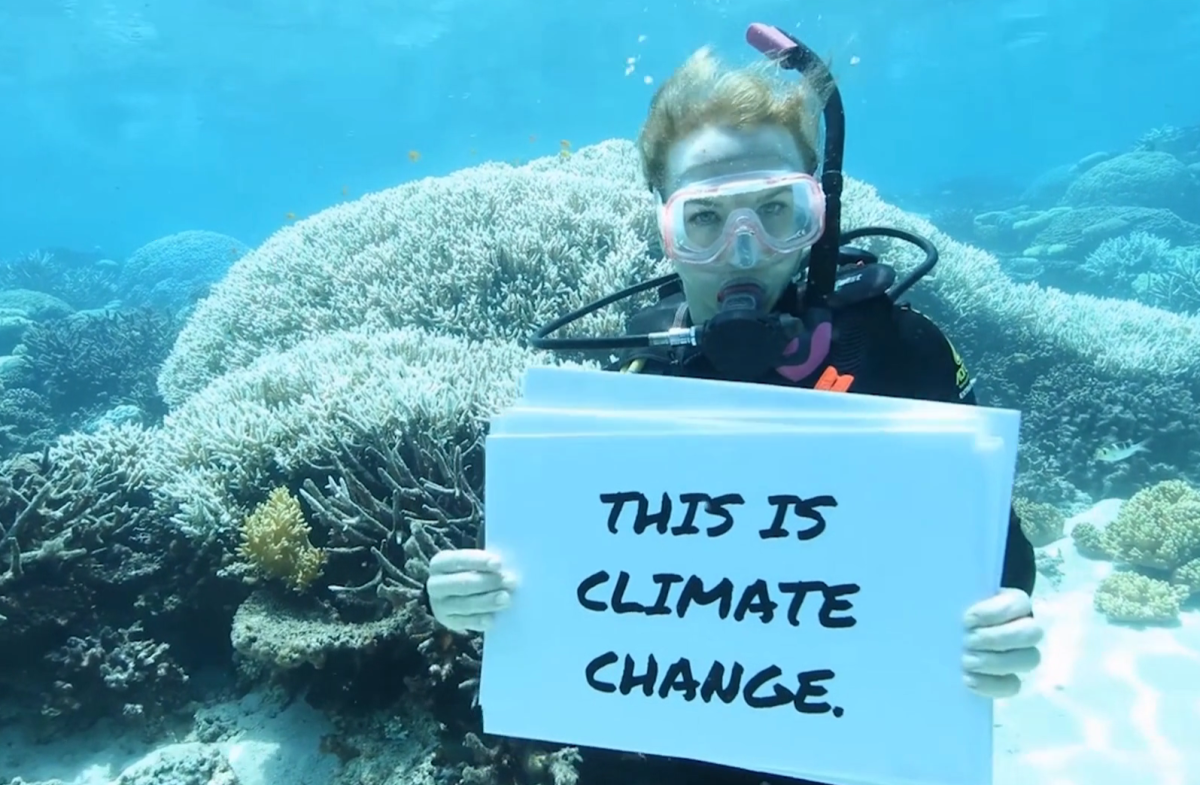
Moreover, they play a pivotal role in safeguarding our coastlines from erosion and the wrath of storms, while also contributing significantly to the regulation of our climate by absorbing and storing carbon dioxide.
Beyond their ecological roles, coral reefs dazzle us with their breathtaking biodiversity and natural splendor. Their disappearance would be a profound loss for future generations.
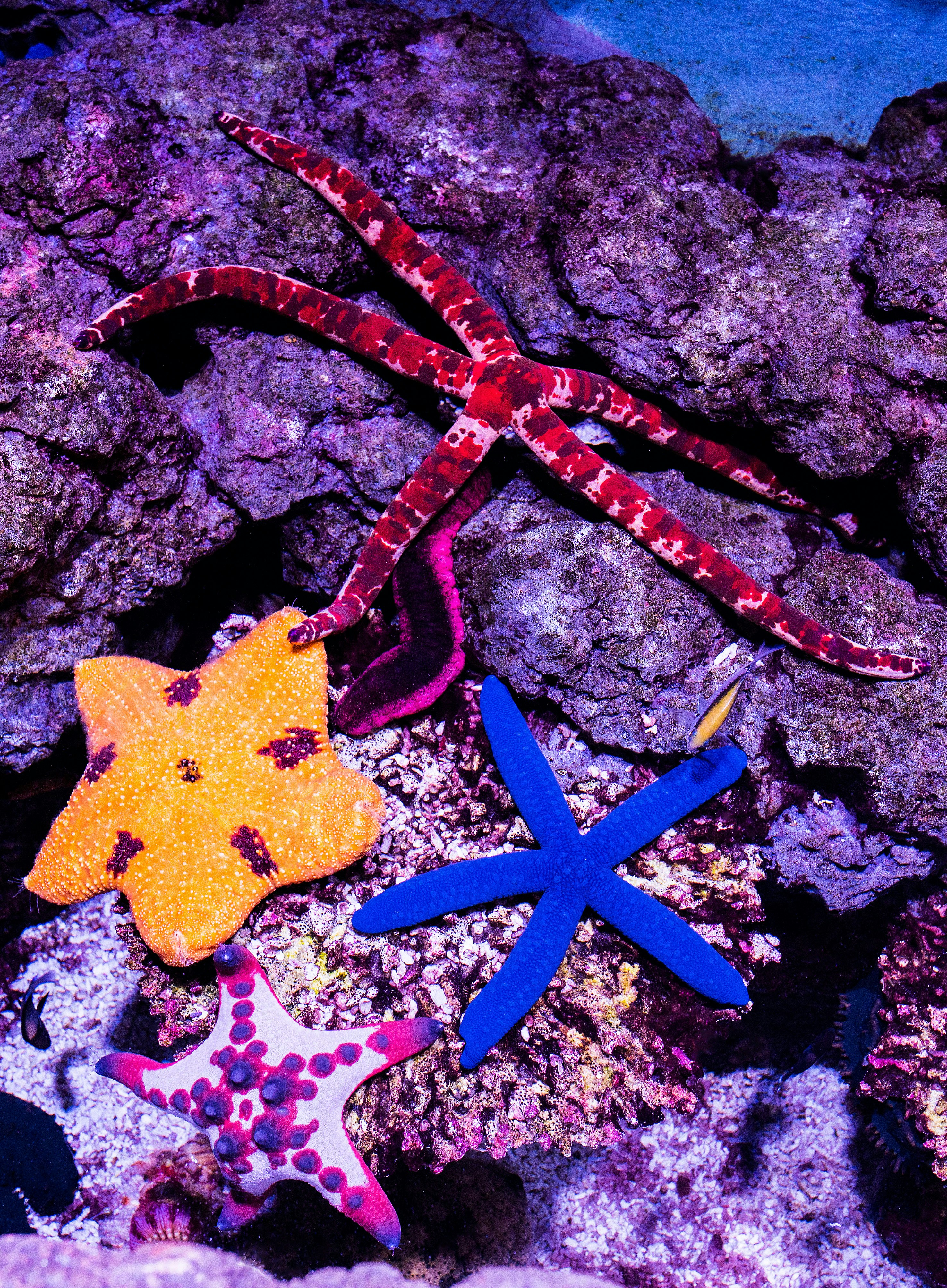
When coral reefs suffer, entire ecosystems suffer alongside the communities that depend on them. By taking proactive measures to prevent and address coral bleaching, we are safeguarding one of our planet’s most precious resources.
The consequences of coral bleaching are far-reaching and irreversible. Once coral dies off, recovery is exceedingly rare. With reduced coral populations, reproduction becomes a struggle, leading to the gradual decline of entire reef ecosystems, which are vital to both wildlife and human communities. The issue of coral bleaching is not isolated; it affects reefs globally.
According to the National Oceanic and Atmospheric Administration, from 2014 to 2017, approximately 75% of the world’s tropical coral reefs experienced significant heat stress, leading to bleaching events. Shockingly, this heat stress resulted in the death of coral in about 30% of these reefs. Such statistics highlight the urgent need to address and mitigate the impacts of coral bleaching on a worldwide scale.
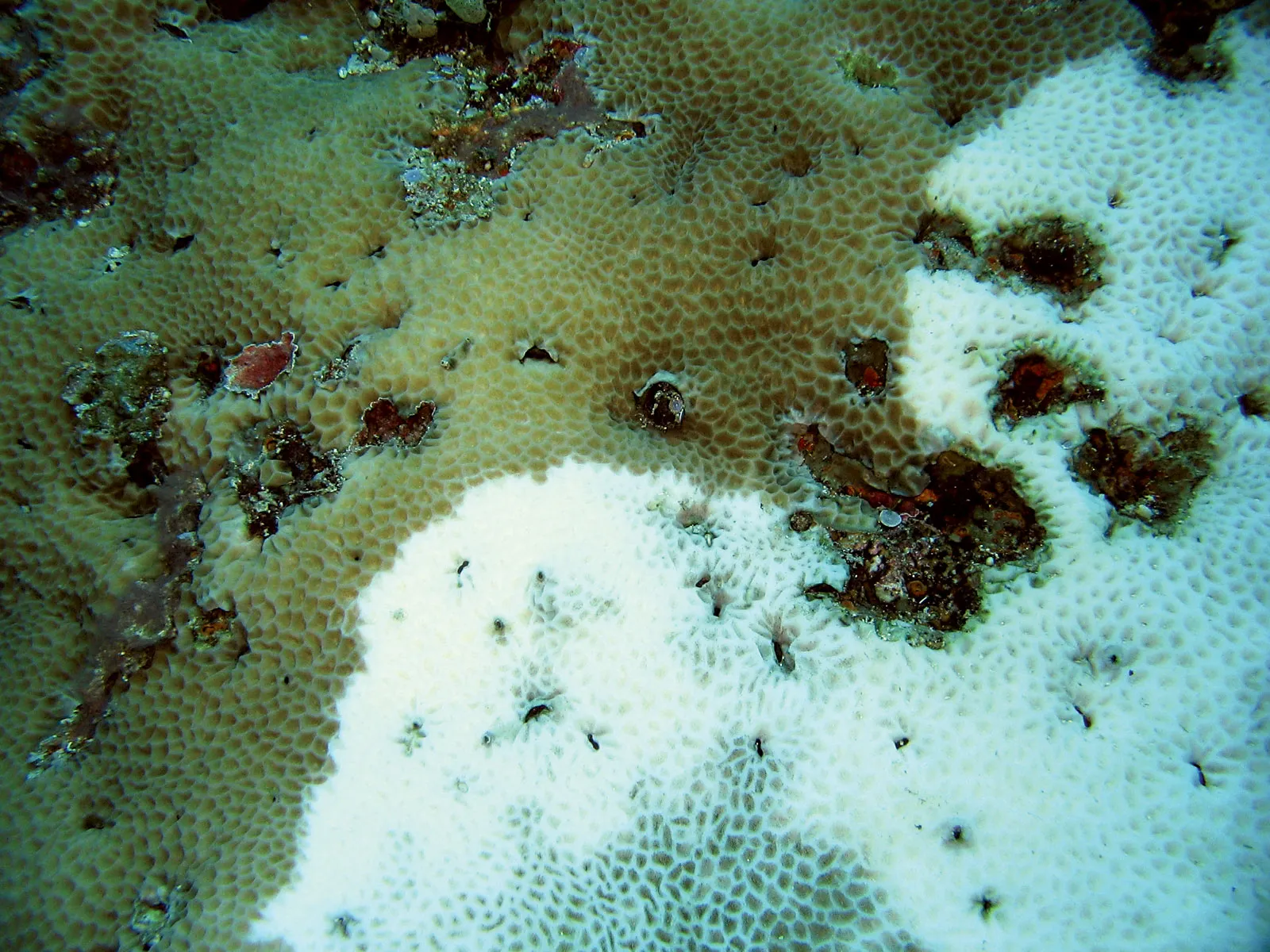
The Impacts
- Impact of Coral Bleaching on Wildlife
Coral reefs are vital ecosystems that support an incredibly diverse array of marine life. Numerous species, such as sea turtles, fish, crabs, shrimp, jellyfish, sea birds, starfish, and more, rely on coral reefs for survival.
These reefs offer essential services like shelter, spawning grounds, and protection from predators. Furthermore, coral reefs form the foundation of ocean food chains. As coral bleaching causes these ecosystems to deteriorate, it puts already vulnerable species at risk of extinction.
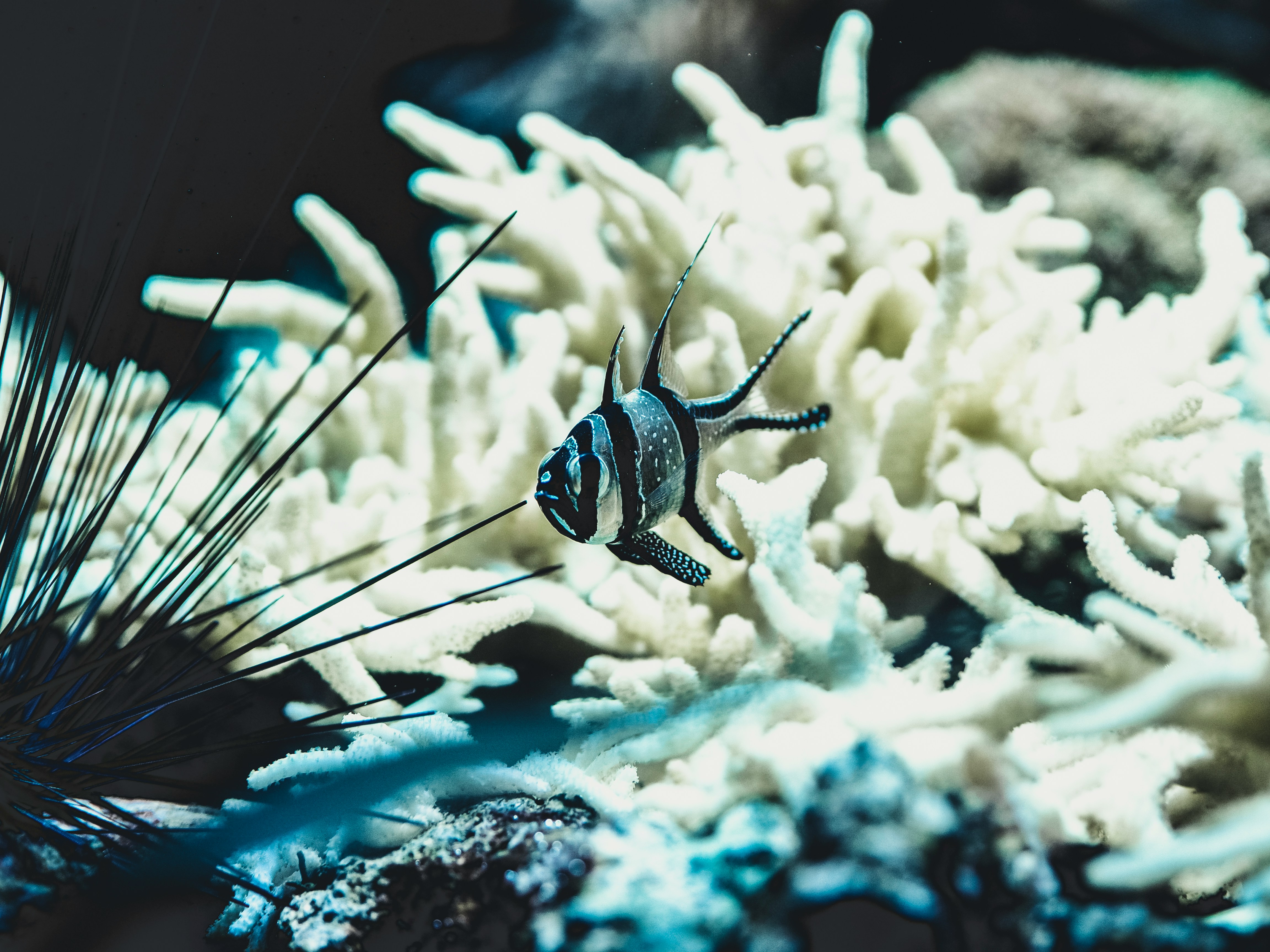
- Impact of Coral Bleaching on Humans
Coral bleaching significantly affects human livelihoods, food security, and safety.
Coral reefs serve as natural barriers that absorb the impact of waves and storm surges, safeguarding coastal communities. Their decline necessitates reliance on costly and less effective manmade seawalls, which also pose environmental hazards during construction.
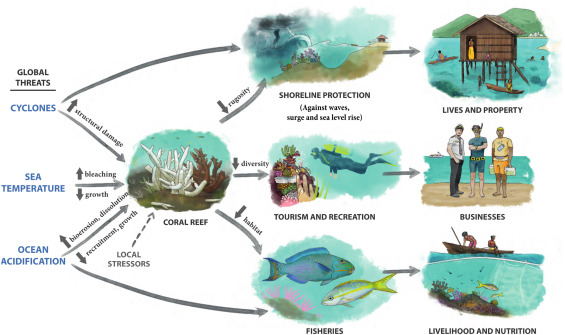
Furthermore, coral bleaching exacerbates the overfishing crisis by disrupting the food web and depriving fish and crustaceans of essential spawning and development grounds. Communities dependent on these marine resources for income or sustenance face severe repercussions.
Lastly, reef-based tourism generates billions of dollars annually and supports numerous jobs. Bleached coral reefs devoid of their vibrant marine inhabitants threaten this vital economic sector. This underscores the far-reaching consequences of coral bleaching for both wildlife and human well-being.
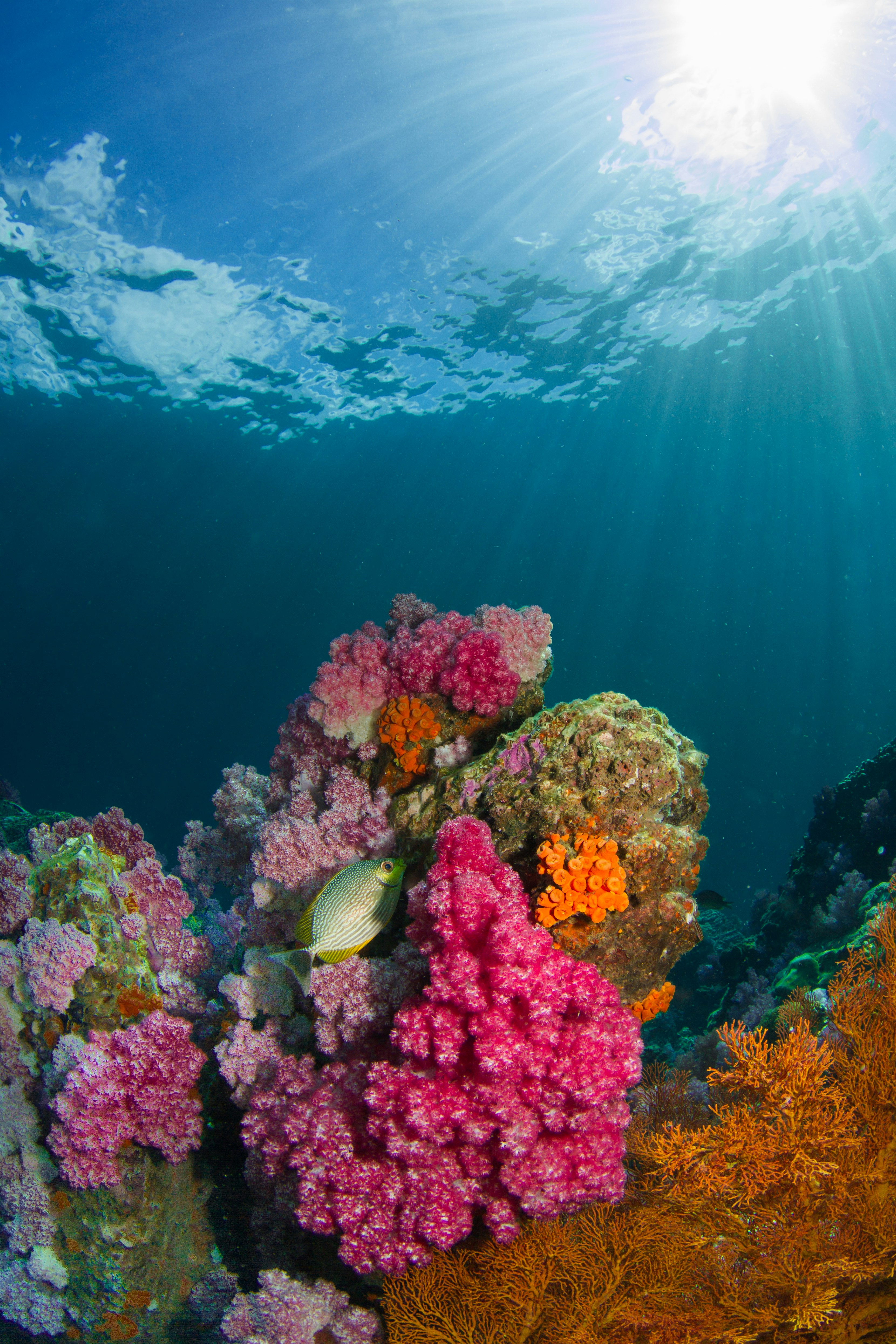
Current Condition of Coral Reefs
The recent announcement of the fourth global coral bleaching event highlights an urgent need to take action: reducing greenhouse gas emissions and prioritizing resilient coral reefs for conservation efforts.
Mass bleaching events on coral reefs are a relatively new phenomenon, with the first global event occurring in 1998. These events are deemed global when significant coral bleaching is observed across the Atlantic, Indian, and Pacific oceans.
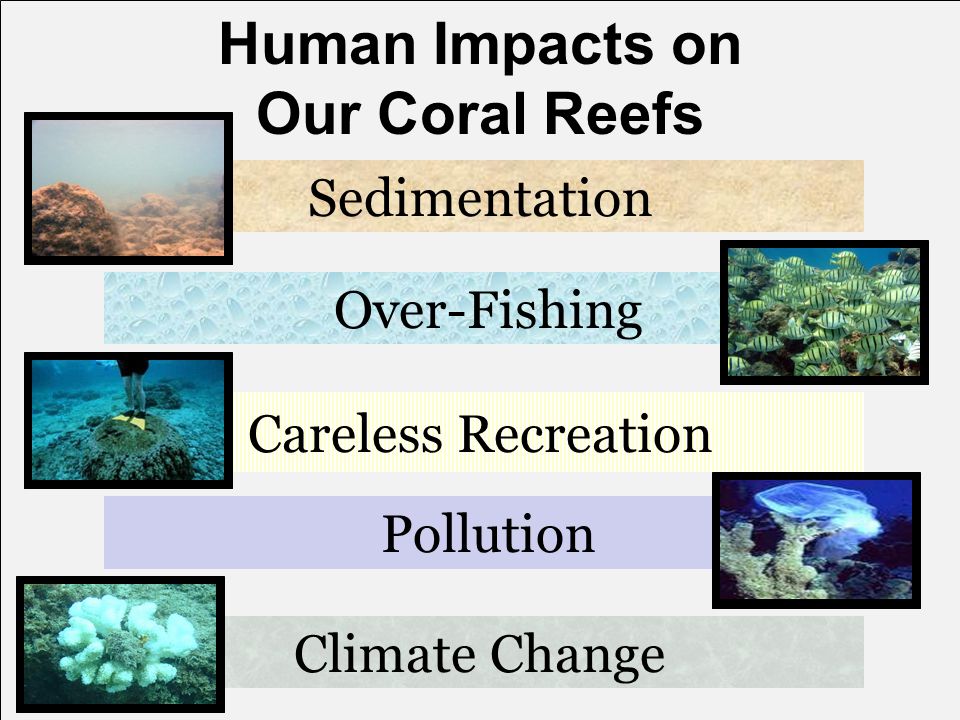
The first indications of this event surfaced last year in the Caribbean, where bathers noticed unusually warm water off the Florida coast. Since then, this heat has spread to the southern hemisphere, impacting over half of the world's coral, including Australia's Great Barrier Reef and coastlines in Tanzania, Mauritius, Brazil, Pacific islands, the Red Sea, and the Persian Gulf.
The ongoing event, which started during the intense heat of the northern hemisphere summer in 2023 and continued into the southern hemisphere summer of 2023–24, is expected to be one of the most severe on record.
The confirmation by the US National Oceanic and Atmospheric Administration (NOAA) is significant, marking the second global mass bleaching event in the last decade. It signals a troubling reality of more frequent and severe bleaching as ocean temperatures continue to rise to unprecedented levels.
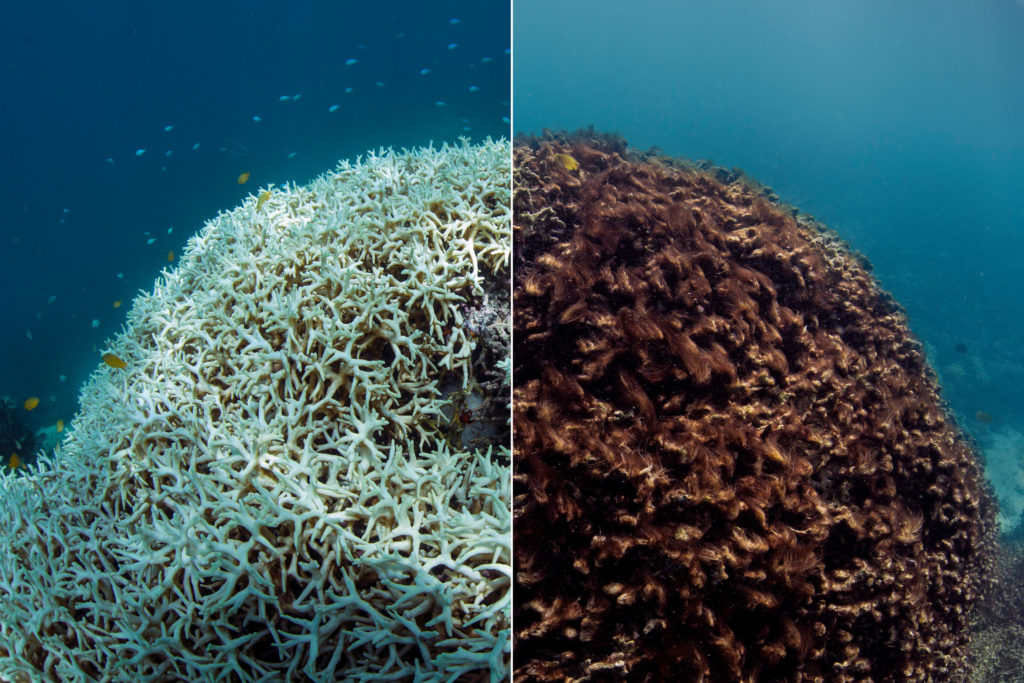
Coral reefs worldwide are turning white and dying due to record ocean heat, prompting this fourth global mass coral bleaching event, as confirmed by NOAA. Reports from scientists globally have highlighted widespread stress across all major oceans – the Atlantic, Pacific, and Indian.
Previously, peak summer temperatures on the Great Barrier Reef occurred around February. Now, these higher temperatures persist for longer, well into April, surpassing historical norms. On the Great Barrier Reef alone, large swathes have experienced record heat stress during the summer (December to March), with significant bleaching observed on three-quarters of surveyed shallow-water coral reefs.

While coral reefs naturally experience cycles of decline and recovery, recovery periods are now shorter, with stress events such as marine heatwaves occurring more rapidly and affecting larger areas. Global sea surface temperatures continue to exceed long-term averages.
As the southern hemisphere transitions into winter, the tropical oceans of the northern hemisphere are entering summer, likely leading to increased heat stress earlier in the year compared to previous seasons. Last August, the global average ocean temperature reached a record high and has remained consistently above average since then.
Rising sea surface temperatures are primarily driven by climate change, as greenhouse gases emitted from burning fossil fuels are absorbed by the oceans. Additionally, the natural climate phenomenon El Niño has contributed to warmer temperatures since last June, although recent indications suggest it is weakening.
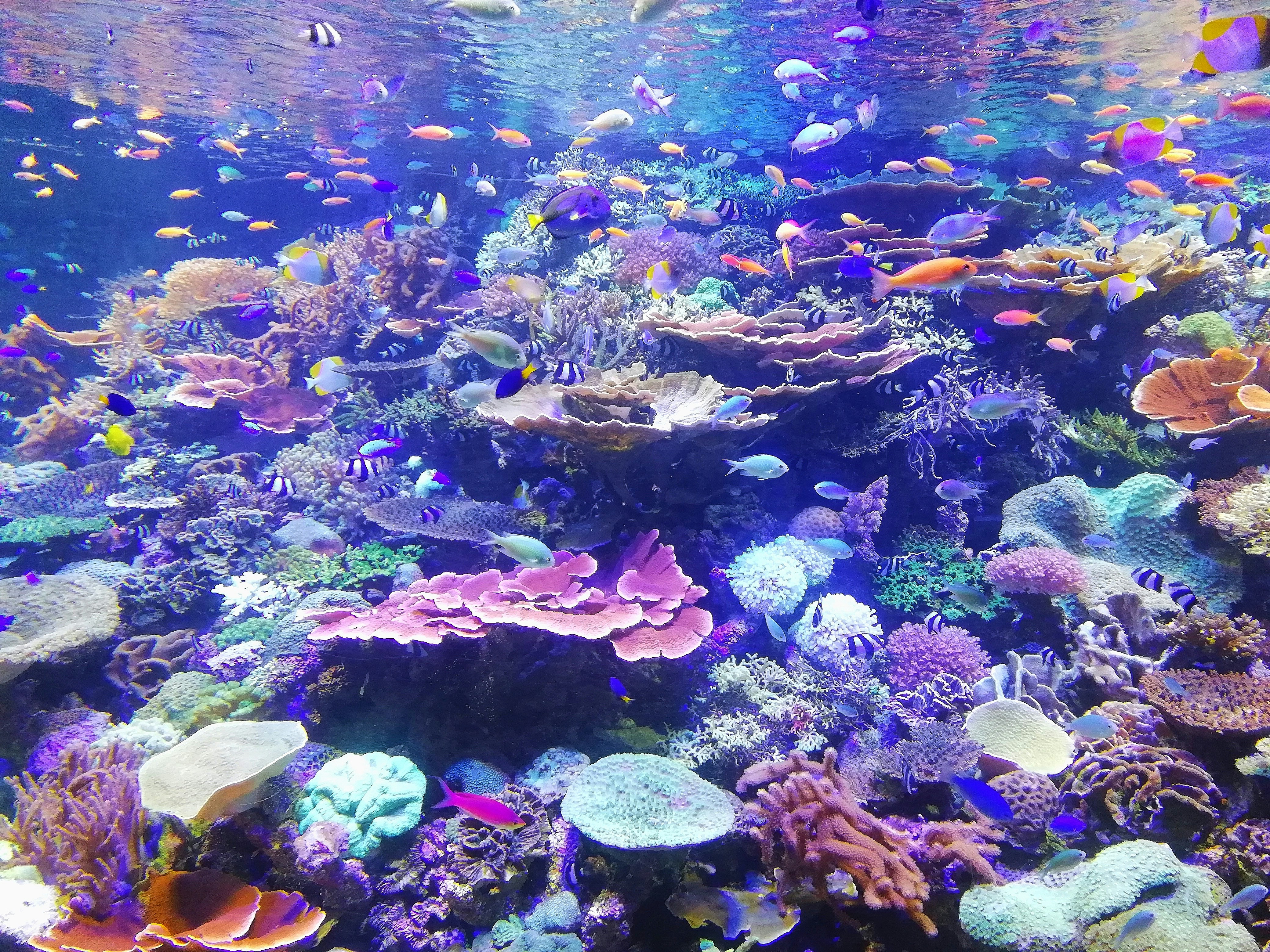
An opportunity to learn more about saving reefs
Long-term monitoring reveals which areas of coral reefs naturally recover from disturbances and which do not. This data is vital for reef managers and scientists to target their conservation efforts effectively.
Currently, obtaining this information is challenging due to the vastness and remoteness of coral reef locations worldwide, spanning approximately 249,713 square kilometres. However, recent monitoring advancements promise to provide better quality data in the near future.
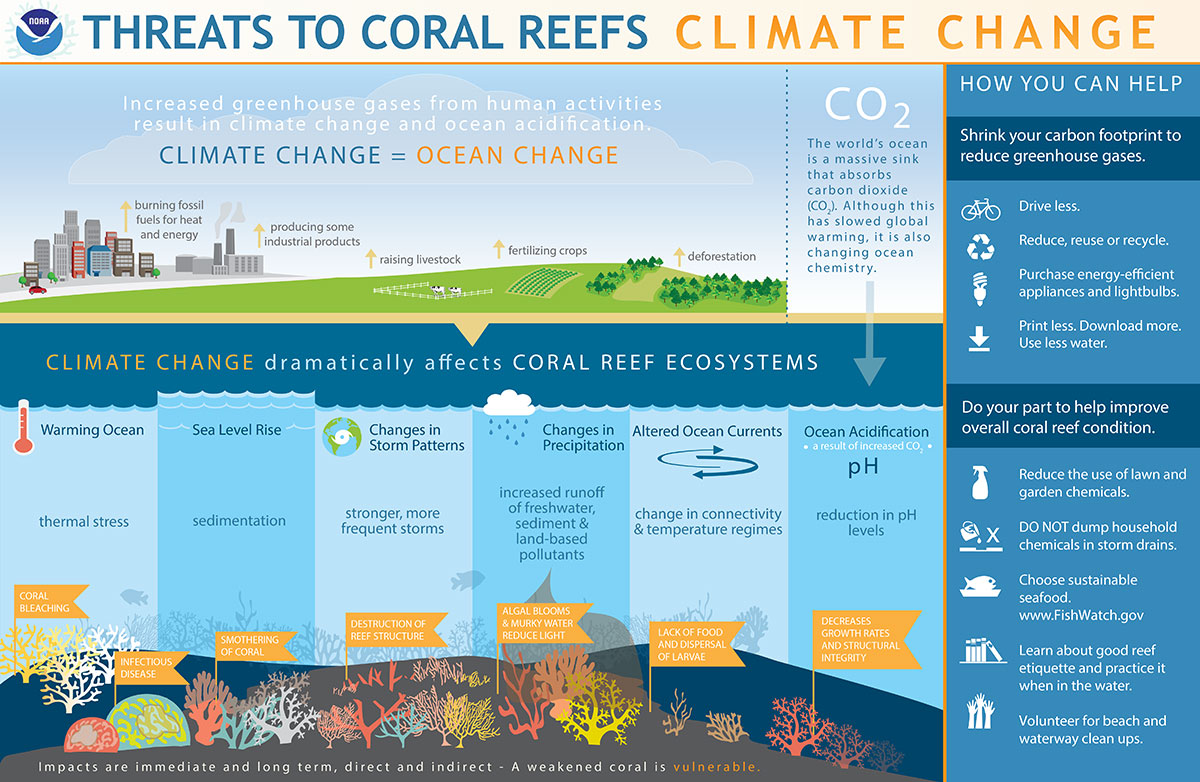
Despite the devastation caused by mass coral bleaching events, they offer unique research opportunities. Scientists globally, including in Australia, are investigating heat-tolerant corals, adaptation to marine heatwaves, variations in recovery rates, and how this knowledge can inform interventions to bolster reef resilience.
Developing science-based interventions that align with local biophysical and socio-economic conditions will make conservation efforts more relevant and effective at a local level.
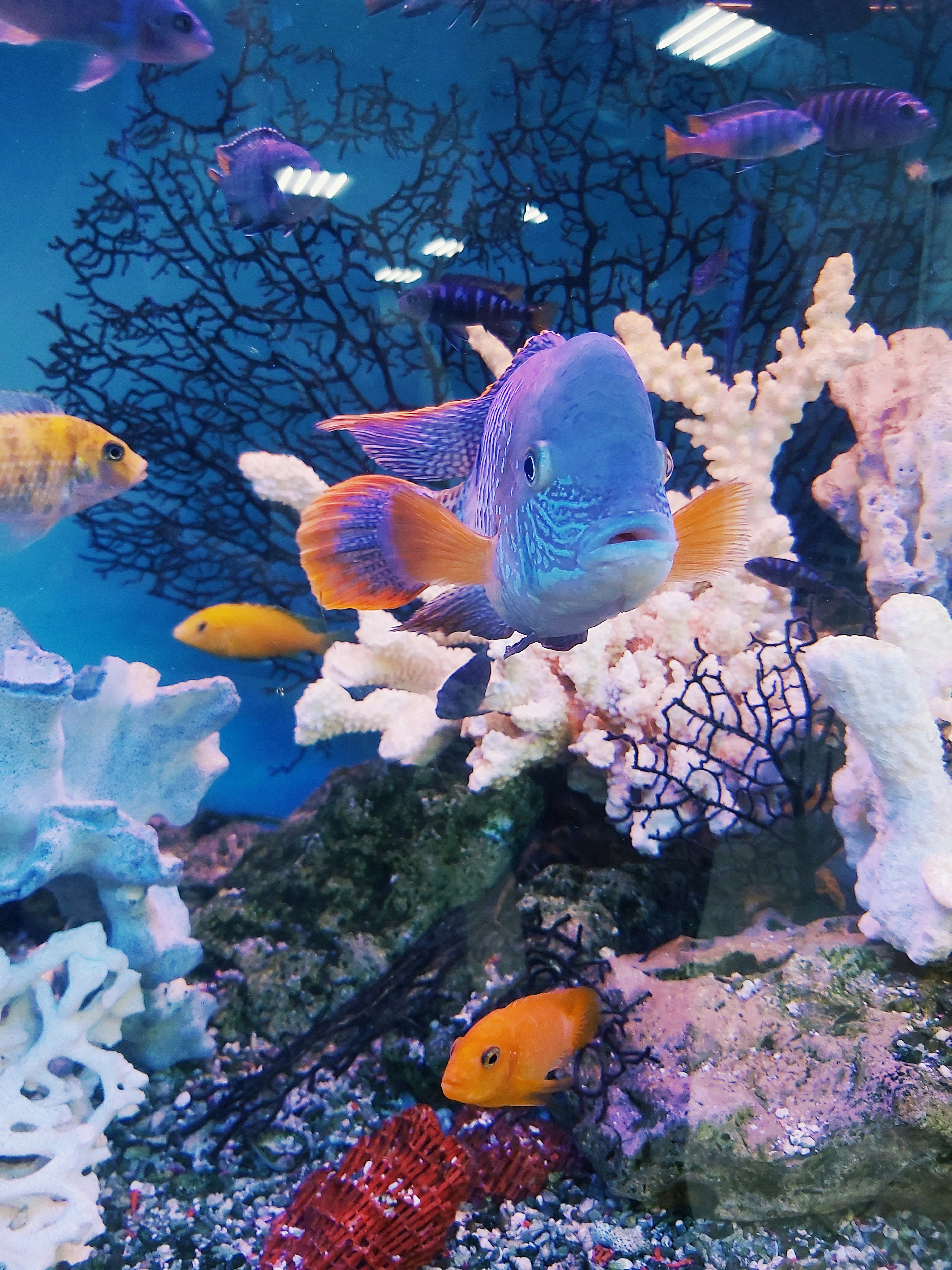
Can reefs recover from this event?
The ongoing global event is still unfolding, and its full effects will take time to become clear. Coral deaths can be immediate or delayed, with some colonies recovering while others succumb once ocean temperatures return to normal. The response of corals to heat stress and their recovery varies greatly based on local conditions and species.
Coral bleaching occurs when stressed corals expel their symbiotic algae, turning white though they are not dead. Bleached corals are weakened and more vulnerable to diseases, with potential impacts on their reproductive abilities.
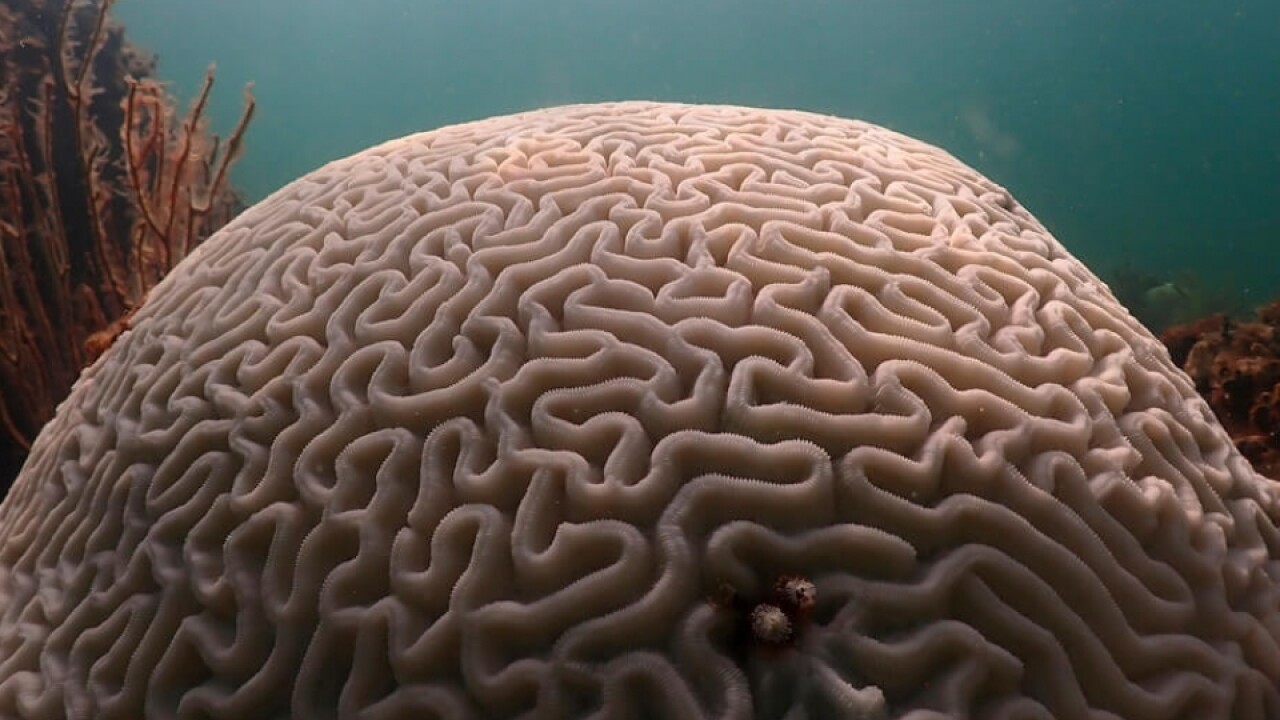
Data from the Global Coral Reef Monitoring Network spanning over 40 years indicate a decline in coral cover from 2009 to 2018, reflecting the combined effects of bleaching events and local pressures like pollution, coastal development, and overfishing.
Following the severe bleaching event of 2014–17, some reefs saw recovery during less disturbed periods, particularly through the growth of fast-growing "tabular" corals, potentially altering the reef's species composition over time.
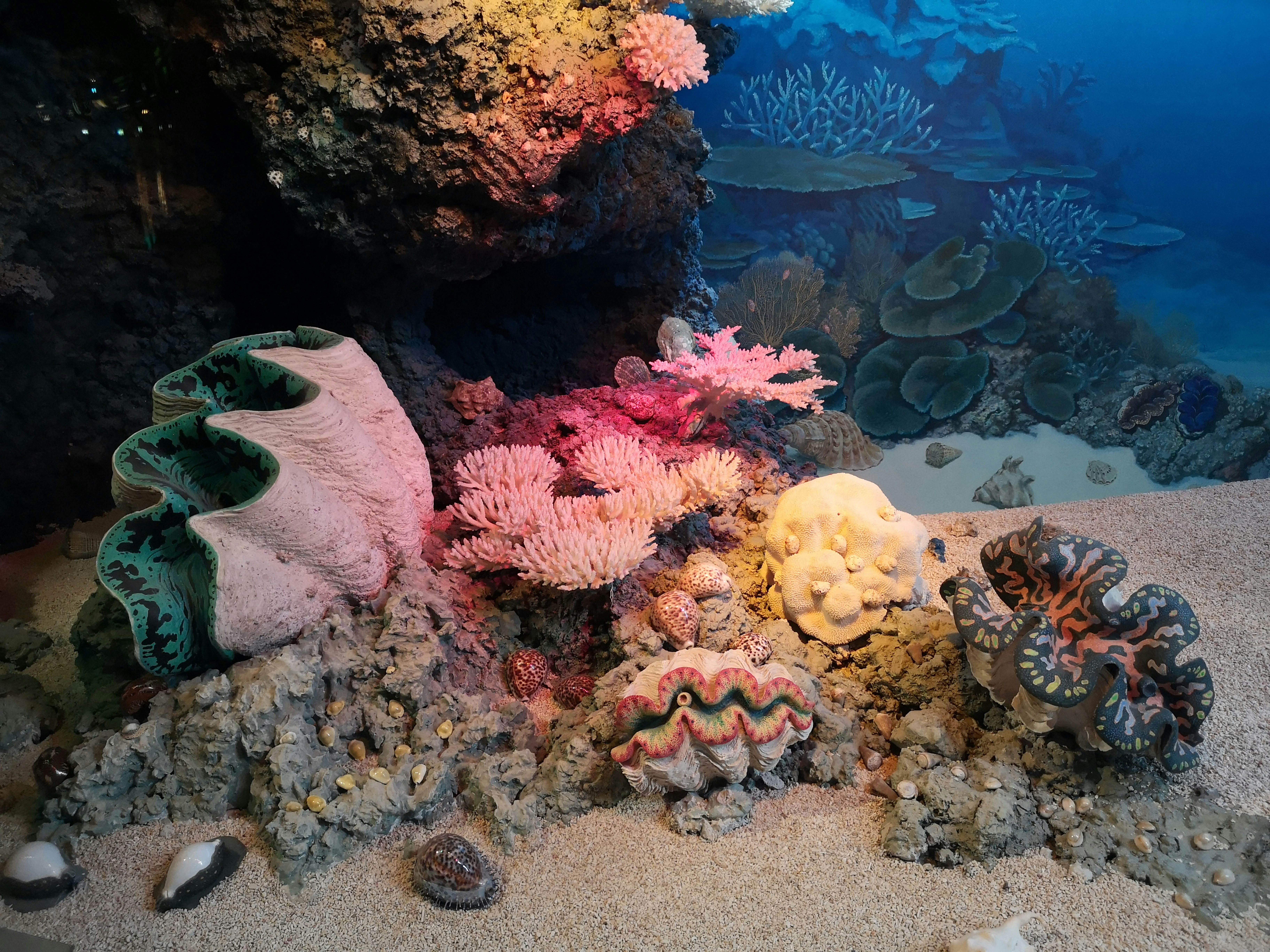
Note: A recent study published in March 2024 in Royal Society Open Science suggests that playing sounds from healthy coral reefs on degraded reefs could attract coral larvae to recolonize them. The research indicates that coral larvae rely on ocean sounds to guide their settlement and growth decisions. Healthy coral reefs boast a diverse soundscape, filled with fish noises like croaks, purrs, and grunts, along with the crackling of snapping shrimp. These sounds serve as important cues for larval coral seeking optimal settlement sites. In an experiment off the coast of the US Virgin Islands, scientists played recordings of healthy coral reefs to a struggling reef, resulting in a potential boost for its regeneration.
What Can You Do to Help?
We each play a vital role in safeguarding coral reefs. Numerous steps can be taken to protect these ecosystems and combat coral bleaching. While the situation is urgent, it is not beyond hope—we must take decisive action now to ensure coral's survival for generations to come.
- Simple daily actions can contribute significantly to reducing coral reef deterioration, such as minimizing stormwater and fertilizer runoff and refraining from using herbicides and pesticides.
- However, to effectively combat coral bleaching, the issue of climate change must be addressed head-on. This necessitates global, comprehensive, and immediate efforts to curb emissions.
- A key step is to diminish your carbon footprint by conserving energy and advocating for policies that combat climate change.
- Additionally, you can lessen your impact on coral reefs by adopting responsible travel practices, opting for reef-safe sunscreens and sustainable seafood, and refraining from activities like anchoring on reefs or touching coral, which can cause damage.
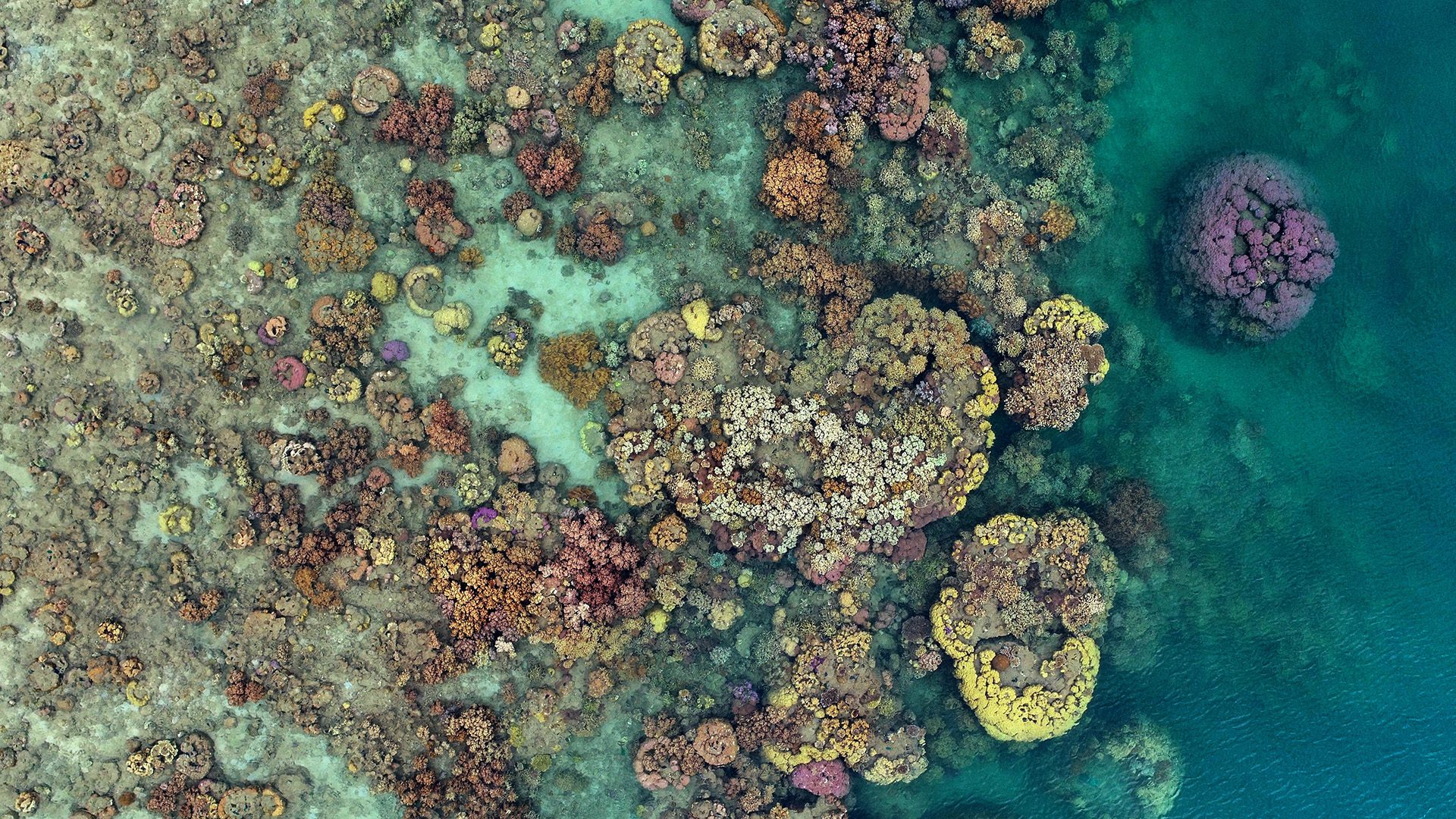
Despite appearing beautiful in photographs, close-up examinations reveal that bleached coral is visibly ailing and deteriorating. Coral bleaching poses a significant danger to coral reefs and the diverse species reliant upon them. By comprehending the causes and consequences of coral bleaching, and by actively mitigating our environmental impact, we can safeguard these vital ecosystems for future generations.
Inputs from agencies
Image Source: Multiple Agencies
© Copyright 2024. All Rights Reserved Powered by Vygr Media

